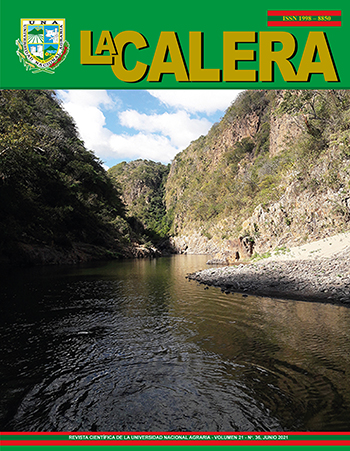Bactericera cockerelli Sulc. (Hemíptera: Triozidae) causing purple tip (Candidatus liberibacter, solanacearum) in potato (Solanum tuberosum L.) in Estelí, Nicaragua
DOI:
https://doi.org/10.5377/calera.v21i36.11832Keywords:
Psilido, incidence, population fluctuationAbstract
Solanum tuberosum L potato belongs to the Solanaceae family, it is the fourth largest crop grown in more than 100 countries. in Nicaragua, a per capita consumption is of 8 kg annualy, where between 800 and 1 200 hectares are cultivated and a production of 35 % to 40 % of the national demand is obtained. The aim of this study was to determine the population fluctuation of Bactericera cockerelli and incidence of purple top (Candidatus Liberibacter solanacearum) in commercial batches of potato (Solanum tuberosum L.) in the municipality of Estelí between the months of January to November 2014 the data collection was performed in batches of potato in the towns of Miraflor and Tisey, the lots were selected with similarity in climatic conditions and crop management, in each selected batch conditions yellow sticky traps were placed with glue to catch adult B. cockerelli, similarly random sampling were conducted in 100 plants per batch to measure the population fluctuation of nymphs and adults of the vector, and to measure the incidence of symptoms similar to Candidatus Liberibacter solanacearum including five plants were selected for analysis and pathogen detection by PCR technique at the National Center for Plant Health Diagnosis of IPSA. The results indicated that the insect was present from the beginning of the study being the greatest catches in the months February to May; July, August and October with 0.84 average insects per trap, just as the months of March, April, July and October was where more plants with symptoms of 3 % to 4 % incidence, were expressed, also of samples taken only 20 % resulted positive to the disease result with low populations of the insect vector.
Downloads
499
EPUB (Español (España)) 127

